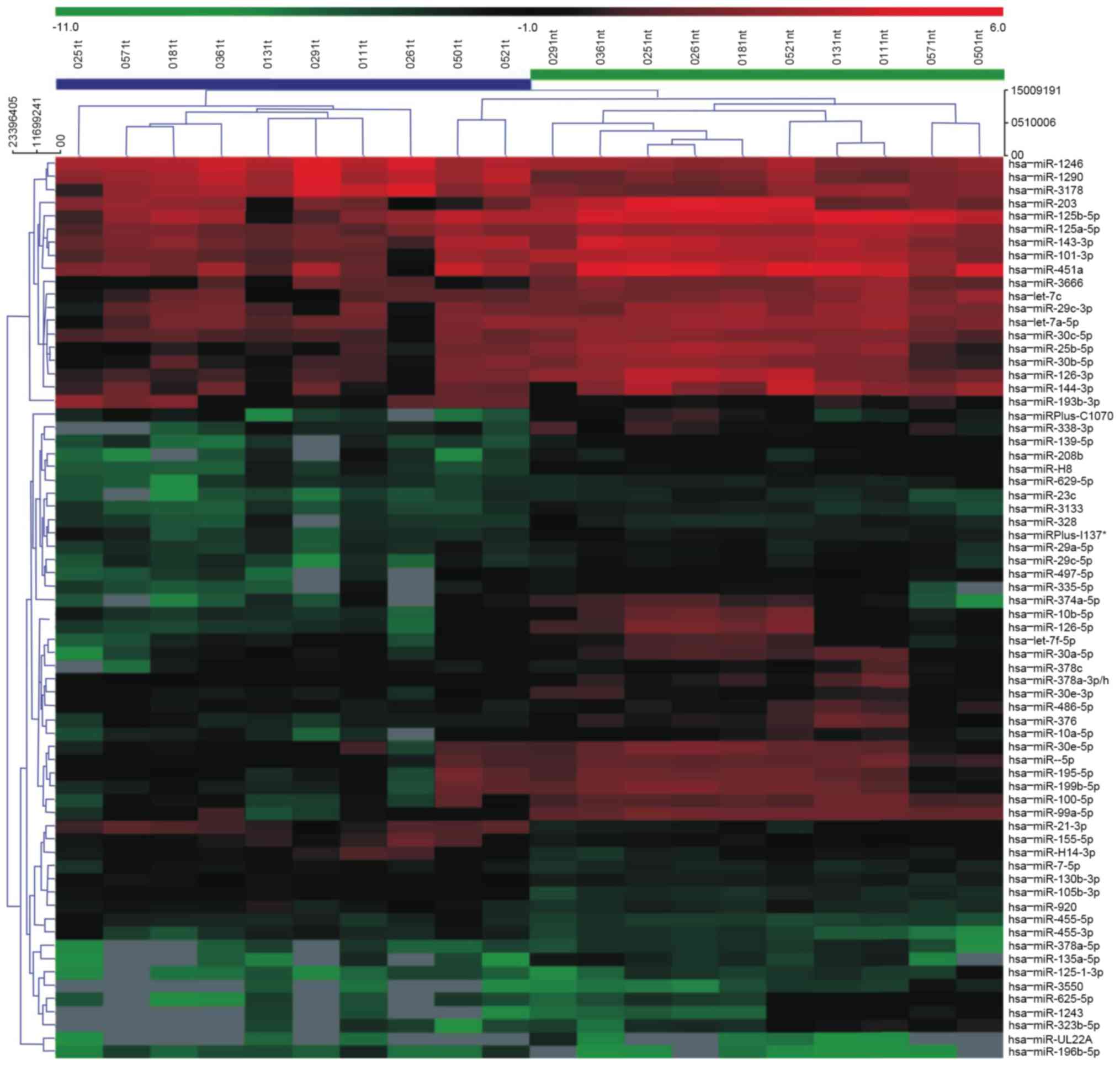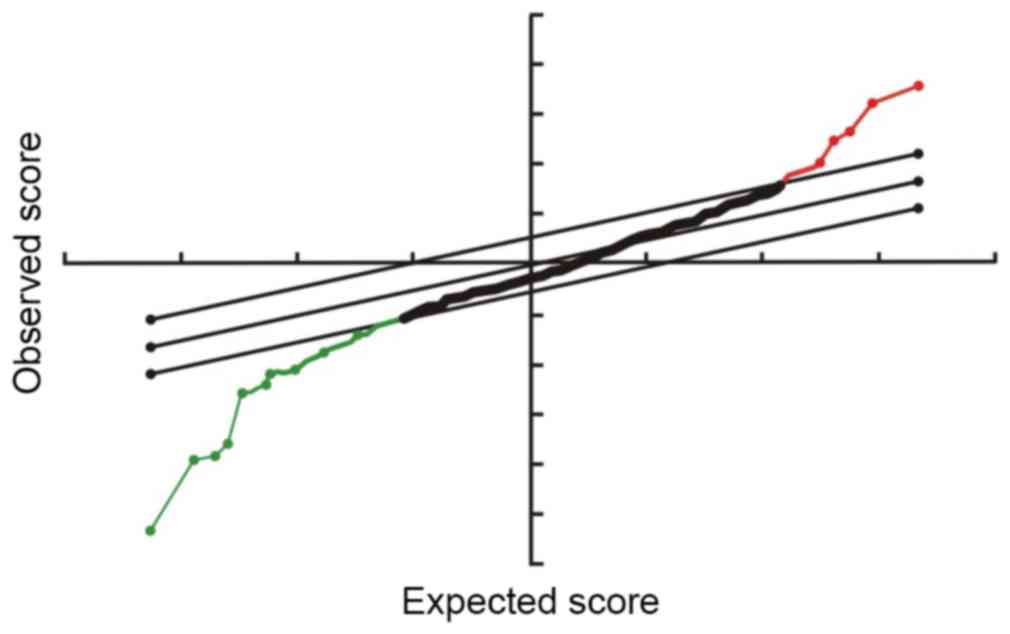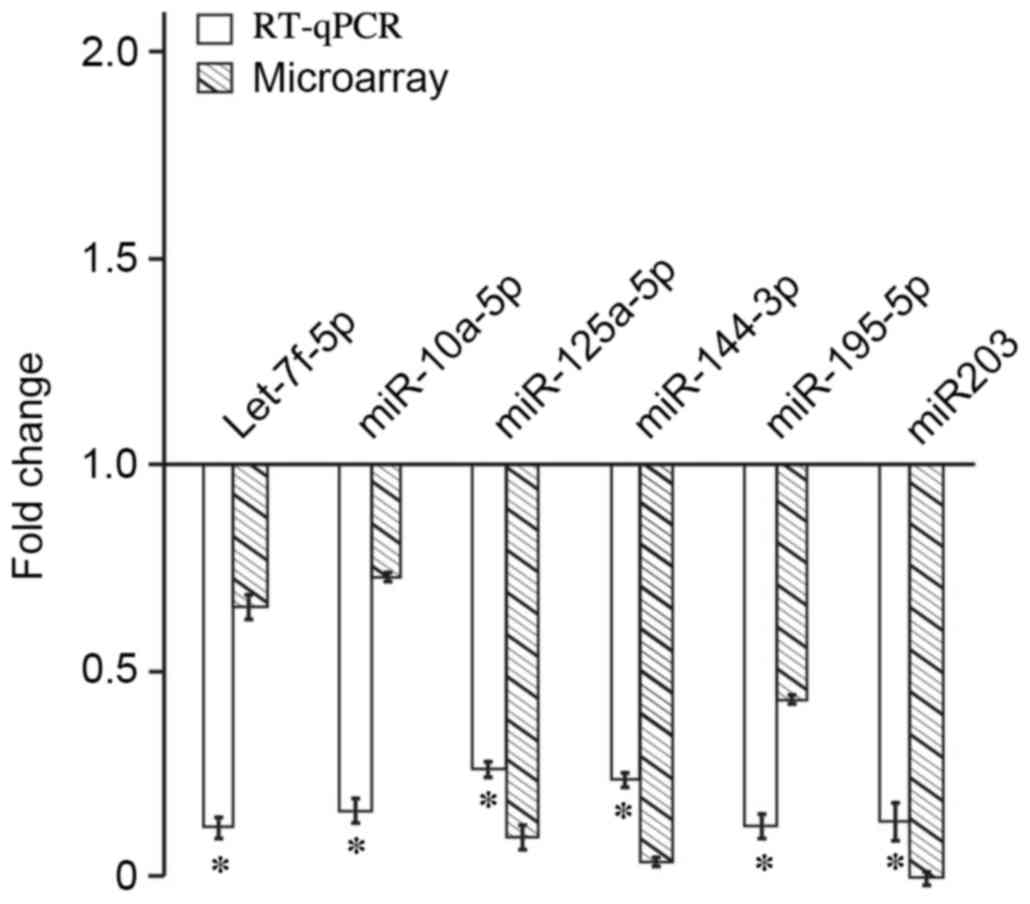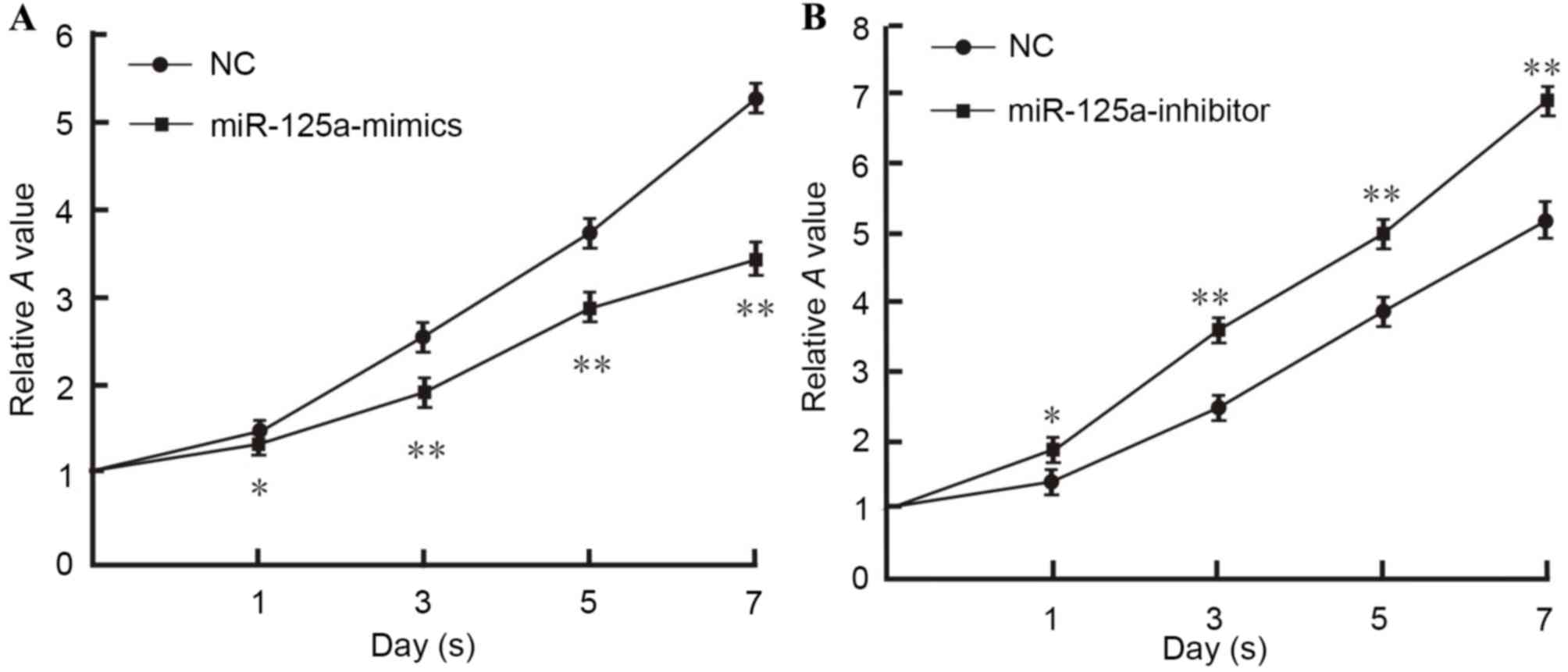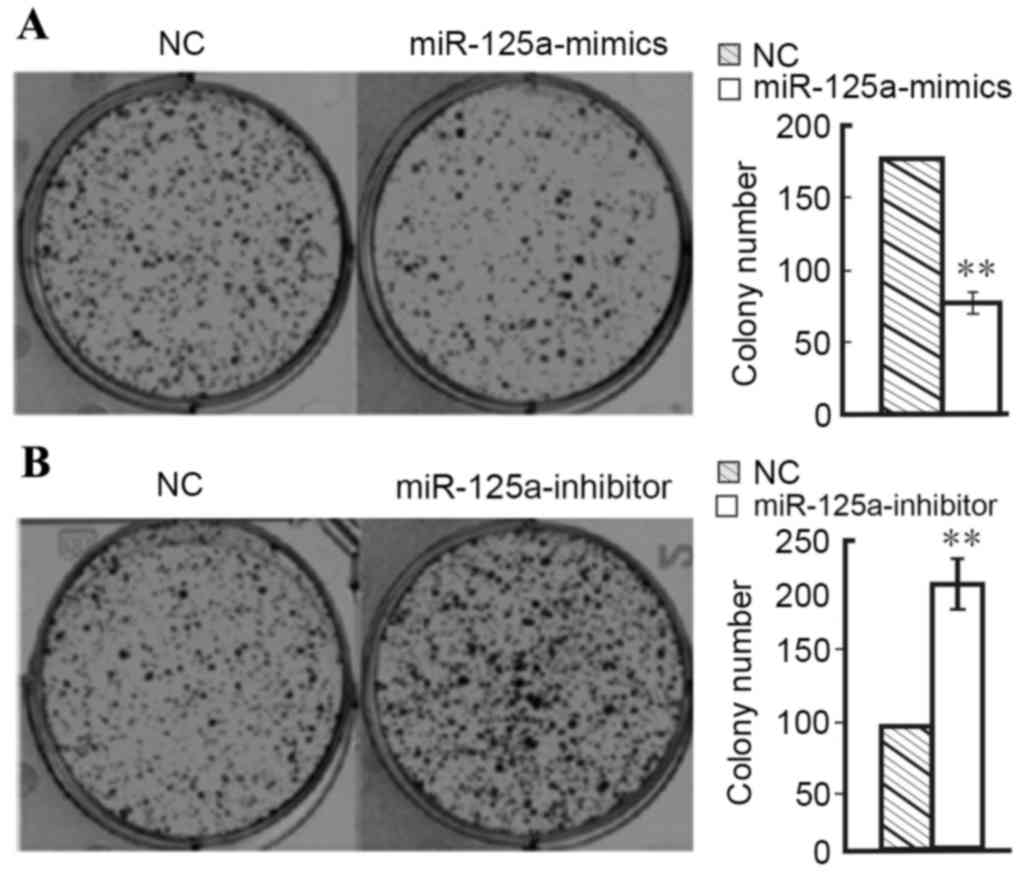|
1
|
Lu ZM: Differential microRNA expression
profiling in laryngeal cancer and study of mir-125a on the
proliferation of laryngeal cancer cell line. Southern Med Univ
Master's Degree2013
|
|
2
|
Jaseviciene L, Gurevicius R, Obelenis V,
Cicenas S and Juozulynas A: Trends in laryngeal cancer incidence in
ithuania: A future perspective. Int J Occup Med Environ Health.
17:473–477. 2004.PubMed/NCBI
|
|
3
|
Lu ST, Wei KR, Yu BH, et al: Incidence
trend analysis of laryngeal carcinoma. Xian Dai Zhong Liu Yi Xue.
12:158–160. 2004.(In Chinese).
|
|
4
|
Hoffman HT, Porter K, Karnell LH, Cooper
JS, Weber RS, Langer CJ, Ang KK, Gay G, Stewart A and Robinson RA:
Laryngeal cancer in the United States: Changes in demographics,
patterns of care and survival. Laryngoscope. 116 Suppl 111:S1–S13.
2006. View Article : Google Scholar
|
|
5
|
Martin DA, James O, Allen SL and John EN:
Clinical oncology. Peking: Scientific Publishing Agency; pp.
18012001
|
|
6
|
Hashibe M, Boffetta P, Zaridze D, Shangina
O, Szeszenia-Dabrowska N, Mates D, Fabiánová E, Rudnai P and
Brennan P: Contribution of tobacco and alcohol to the high rates of
squamous cell carcinoma of the supraglottis and glottis in central
Europe. Am J Epidemiol. 165:814–820. 2007. View Article : Google Scholar : PubMed/NCBI
|
|
7
|
Potter CS, Wang Z, Silva KA, Kennedy VE,
Stearns TM, Burzenski L, Shultz LD, Hogenesch H and Sundberg JP:
Chronic proliferative dermatitis in sharpin null mice: Development
of an autoinflammatory disease in the absence of B and T
lymphocytes and IL4/IL13 signaling. PLoS One. 9:e856662014.
View Article : Google Scholar : PubMed/NCBI
|
|
8
|
Li P and Wang X: Relationship between Myc
gene family and laryngeal cancer. Shi Yong Zhong Liu Xue Za Zhi.
16:67–69. 2002.(In Chinese).
|
|
9
|
Pietruszewska W, Durko M and Kobos J:
Alterations of cell cycle regulating proteins: Rb, p21 and p16 in
laryngeal cancer. Otolaryngol Pol. 61:951–957. 2007.(In Polish).
View Article : Google Scholar : PubMed/NCBI
|
|
10
|
Croce CM and Calin GA: MiRNAs, cancer and
stem cell division. Cell. 122:6–7. 2005. View Article : Google Scholar : PubMed/NCBI
|
|
11
|
Ambros V: The functions of animal
microRNAs. Nature. 431:350–355. 2004. View Article : Google Scholar : PubMed/NCBI
|
|
12
|
Esquela-Kerscher A and Slack FJ: Oncomirs:
MicroRNAs with a role in cancer. Nat Rev Cancer. 6:259–269. 2006.
View Article : Google Scholar : PubMed/NCBI
|
|
13
|
Wang Z, Potter CS, Sundberg JP and
Hogenesch H: SHARPIN is a key regulator of immune and inflammatory
responses. J Cell Mol Med. 16:2271–2279. 2012. View Article : Google Scholar : PubMed/NCBI
|
|
14
|
Ramdas L, Giri U, Ashorn CL, Coombes KR,
El-Naggar A, Ang KK and Story MD: MiRNA expression profiles in head
and neck squamous cell carcinoma and adjacent normal tissue. Head
Neck. 31:642–654. 2009. View Article : Google Scholar : PubMed/NCBI
|
|
15
|
Livak KJ and Schmittgen TD: Analysis of
relative gene expression data using real-time quantitative PCR and
the 2(−Delta Delta C(T)) method. Methods. 25:402–408. 2001.
View Article : Google Scholar : PubMed/NCBI
|
|
16
|
Schmittgen TD, Lee EJ, Jiang J, Sarkar A,
Yang L, Elton TS and Chen C: Real-time PCR quantification of
precursor and mature microRNA. Methods. 44:31–38. 2008. View Article : Google Scholar : PubMed/NCBI
|
|
17
|
Chen C, Ridzon DA, Broomer AJ, Zhou Z, Lee
DH, Nguyen JT, Barbisin M, Xu NL, Mahuvakar VR, Andersen MR, et al:
Real-time quantification of microRNAs by stem-loop RT-PCR. Nucleic
Acids Res. 33:e1792005. View Article : Google Scholar : PubMed/NCBI
|
|
18
|
Zhang C, Zeng X, Li Z, Wang Z and Li S:
Immunoglobulin A nephropathy: Current progress and future
directions. Transl Res. 166:134–144. 2015. View Article : Google Scholar : PubMed/NCBI
|
|
19
|
Jemal A, Siegel R, Ward E, Murray T, Xu J,
Smigal C and Thun MJ: Cancer statistics, 2006. CA Cancer J Clin.
56:106–130. 2006. View Article : Google Scholar : PubMed/NCBI
|
|
20
|
Huang Q, Yu GP, Mccormick SA, Mo J, Datta
B, Mahimkar M, Lazarus P, Schäffer AA, Desper R and Schantz SP:
Genetic differences detected by comparative genomic hybridization
in head and neck squamous cell carcinomas from different tumor
sites: Construction of oncogenetic trees for tumor progression.
Genes Chromosomes Cancer. 34:224–233. 2002. View Article : Google Scholar : PubMed/NCBI
|
|
21
|
Li YD, Gowhere Ali and Hong SL:
Relationship between single nucleotide polymorphism in genome
carcinoma tissue and tumor metastasis. Aca J Sec Mil Med Univ.
32:713–716. 2011. View Article : Google Scholar
|
|
22
|
Wang J: The application of gene chip
technology on head and neck neoplasm. Otol Forei Med Sci.
29:382–385. 2005.
|
|
23
|
Hui AB, Lenarduzzi M, Krushel T, Waldron
L, Pintilie M, Shi W, Perez-Ordonez B, Jurisica I, O'Sullivan B,
Waldron J, et al: Comprehensive microRNA profiling for head and
neck squamous cell carcinomas. Clin Cancer Res. 16:1129–1139. 2010.
View Article : Google Scholar : PubMed/NCBI
|
|
24
|
Zhong Q, Fang JG, Huang ZG, et al: A
preliminary study of miRNA expression in laryngeal squamous cell
carcinoma. Chin J Cancer Prev Control. 17:1073–1076. 2010.(In
Chinese).
|
|
25
|
Wang P, Fu T, Wang XR, et al: Preliminary
study on the differential expression of miRNA and normal mucosa in
laryngeal squamous cell carcinoma by microarray analysis. Lin
Chuang Er Bi Yan Hou Tou Jing Wai Ke Za Zhi. 24:535–538. 2010.(In
Chinese). PubMed/NCBI
|
|
26
|
Wu YB, Shen ZS, Yu X, et al: Research
advances of microRNAs related to laryngeal carcinoma. Ji Chu Yi Xue
Yu Lin Chuang. 32:583–586. 2012.(In Chinese).
|
|
27
|
Yang J, Zhang Q, Dong JQ, Chang XH and He
XJ: Overexpression of high mobility group A2 and its correlation
with microRNA let-7 falimy in serous ovarian cancers. Beijing Da
Xue Xue Bao. 44:749–754. 2012.(In Chinese). PubMed/NCBI
|
|
28
|
Chen FY and Chen QY: Research progress in
the correlation between MicroRNA let-7 and cancer. Yi Xue Zong Shu.
17:1797–1800. 2011.(In Chinese).
|
|
29
|
Tran N, Mclean T, Zhang X, Zhao CJ,
Thomson JM, O'Brien C and Rose B: MicroRNA expression profiles in
head and neck cancer cell lines. Biochem Biophys Res Commun.
358:12–17. 2007. View Article : Google Scholar : PubMed/NCBI
|
|
30
|
He JF, Luo YM, Wan XH and Jiang D:
Biogenesis of miRNA-195 and its role in biogenesis, the cell cycle
and apoptosis. J Biochem Mol Toxicol. 25:404–408. 2011. View Article : Google Scholar : PubMed/NCBI
|
|
31
|
Zhang S, Li YJ, Zhang C, et al: Study on
the role of K562 in apoptosis induced by norcantharidin in miRNA.
Zhong Guo Bing Li Sheng Li Za Zhi. 27:499–503. 2011.(In
Chinese).
|
|
32
|
Bi Q, Tang S, Xia L, Du R, Fan R, Gao L,
Jin J, Liang S, Chen Z, Xu G, et al: Ectopic expression of miR-125a
inhibits the proliferation and metastasis of hepatocellular
carcinoma by targeting MMP11 and VEGF. PLoS One. 7:e401692012.
View Article : Google Scholar : PubMed/NCBI
|















